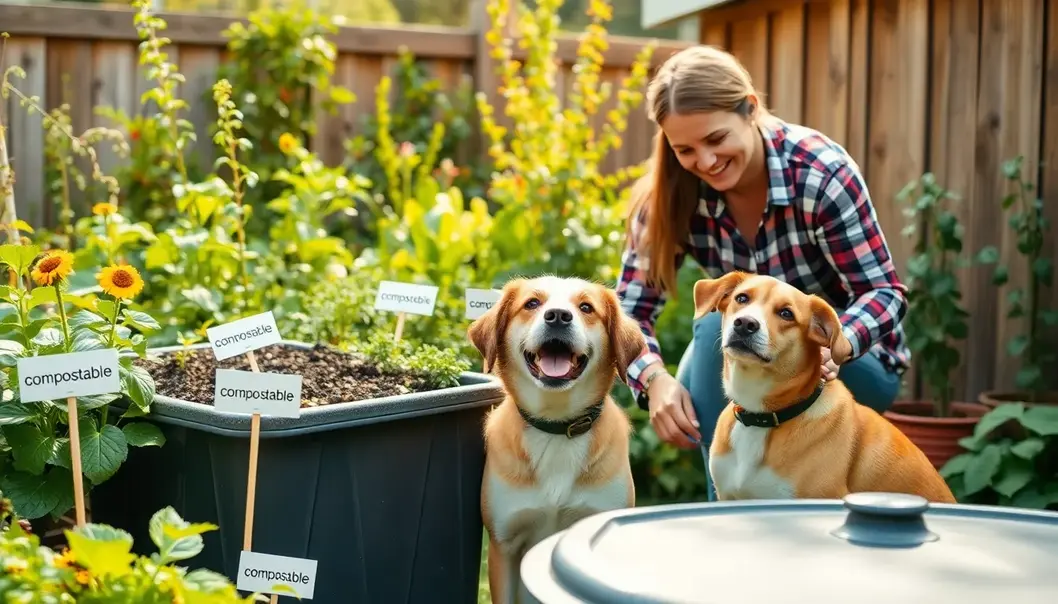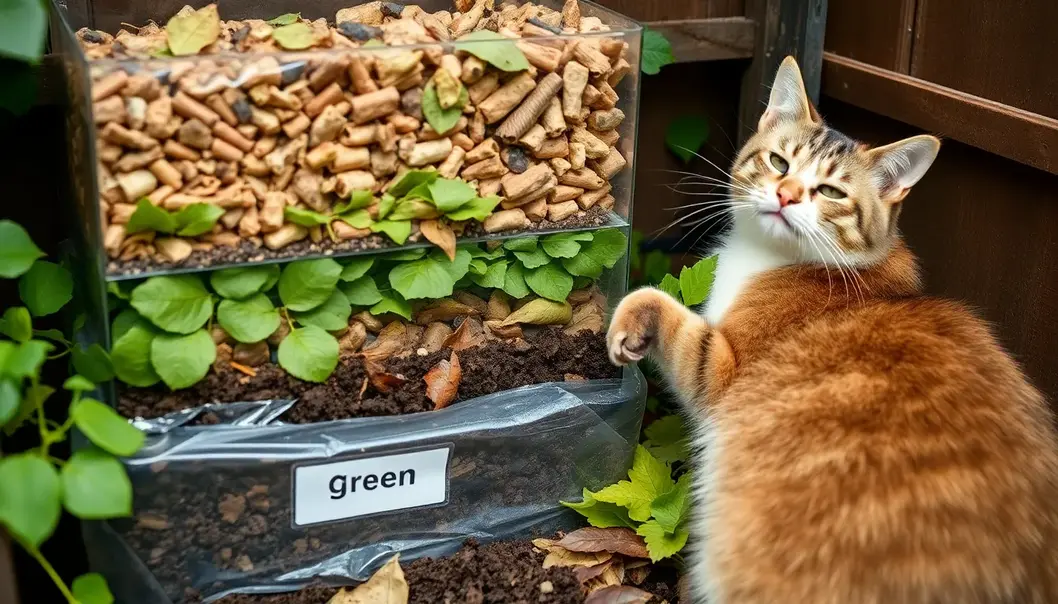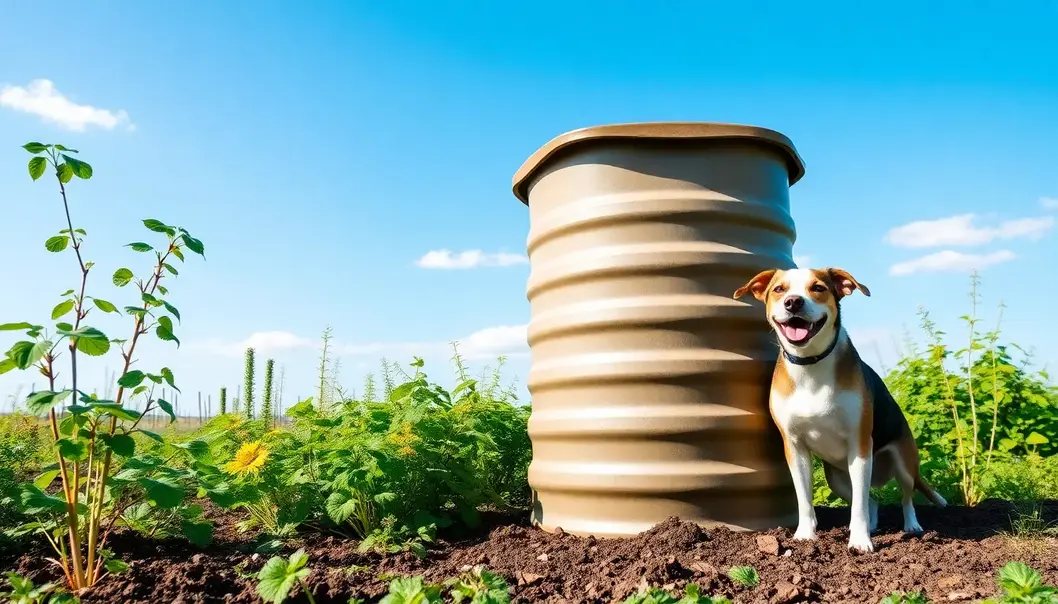Composting may seem like a daunting task, but it’s a rewarding practice that brings significant benefits to your home and garden. As a pet owner, you have an abundant source of compostable material right under your nose! Learning to compost pet waste not only reduces your environmental footprint but also enriches your garden soil, allowing your plants to thrive. This guide will walk you through the basics of composting, specifically tailored for those with furry companions. Let’s embrace this eco-friendly journey, turning what’s often considered waste into a valuable resource, all while keeping our pets happy and healthy.
Understanding Composting: The Basics for Pet Owners

Composting is the natural process of recycling organic matter, such as food scraps and yard waste, into a valuable fertilizer that can enrich soil. This process is not only a sustainable way to reduce waste, but it also contributes to a healthier garden ecosystem. For pet owners, specifically, composting opens the door to managing pet waste in an eco-friendly manner.
The core of composting relies on the decomposition of organic material by microorganisms under controlled conditions. By enhancing the soil quality, composting aids in plant growth, reduces the need for chemical fertilizers, and promotes water retention in plants, which can significantly decrease garden maintenance and cost.
Why Compost Pet Waste?
Pet waste presents unique opportunities and challenges in composting. Dogs and cats produce a significant amount of waste—which, when handled correctly, can be converted into nutrient-rich soil amendments. However, the key is to ensure that this waste is composted properly to avoid the dangers posed by pathogens.
Pet Waste Composting Done Right
When composting pet waste, it’s crucial to maintain the right balance to break down the larger particles and kill harmful pathogens. Only waste from healthy pets should be considered, and any waste that includes medications or chemicals should be avoided. Additionally, a compost pile dedicated to pet waste is recommended to prevent cross-contamination.
Dos and Don’ts
Here are some critical dos and don’ts tailored for pet-related composting:
Dos:
- Select the right materials: Use pet waste from dogs and cats, and add it to a dedicated compost system.
- Maintain temperature: Ensure the compost reaches a temperature of at least 140°F (60°C) to kill pathogens.
- Balance materials: Keep a balance between ‘green’ waste, such as grass clippings and food scraps, and ‘brown’ waste like leaves and shredded paper.
Don’ts:
- Avoid composting litter from non-biodegradable materials: Only use compostable cat litters, such as those made from wood, newspaper, or corn.
- Prevent adding waste from carnivorous pets: Waste from meat-eating pets like ferrets may contain harmful bacteria and parasites.
- Do not use pet compost for vegetable gardens: Use the resulting compost for non-edible plants to avoid any health risks.
By understanding these principles and practices, pet owners can safely convert their pet waste into a beneficial resource for their gardens, contributing to a more sustainable lifestyle both for themselves and the environment. For more insights on living harmoniously with your feline friends, you may want to explore this feline-focused article.
Setting Up Your Pet Composting System

Creating a backyard composting system for your pet waste is a rewarding endeavor that turns waste into valuable garden nourishment. The first step is choosing between building or purchasing a compost bin. If you’re opting for a DIY approach, use weather-resistant materials like wood or recycled plastic. Ensure the bin has a top lid and side ventilation for optimal airflow, allowing microorganisms to thrive.
When arranging the bin’s location, pick a spot in your yard with easy access. It should be away from areas frequented by pets or children. The site should ideally have partial sunlight to maintain warmth, accelerating the decomposition process.
Balancing green and brown materials is crucial for effective composting. Green materials include nitrogen-rich substances like pet waste and fresh grass clippings. Brown materials offer carbon content and include dried leaves, shredded newspaper, and untreated sawdust. To begin, lay a six-inch layer of brown materials at the bottom of the bin to promote aeration. Alternate between layers of greens and browns, maintaining a ratio of roughly one part green to three parts brown.
Aeration plays a pivotal role in maintaining active compost. Use a garden fork or special aerating tool weekly to turn the pile, ensuring oxygen reaches the center. This not only speeds up the decomposition but also prevents unpleasant odors which could be a deterrent to pets.
Monitoring moisture levels is important to sustain a healthy composting system. The pile should be moist, similar to the feel of a wrung-out sponge. If it’s too wet, add more brown materials; if too dry, sprinkle with water as needed.
Safety is paramount. Avoid incorporating waste from pets that are sick or have parasites to prevent contamination risks. Mark the compost area clearly to deter pet curiosity. Moreover, continue to educate yourself on which pet-related materials are safe for composting by visiting resources such as Life with Dogs.
By adhering to these guidelines, your pet composting system will work efficiently and safely, contributing positively to the environment while enriching your garden soil.
Final words
Composting as a pet owner is more than just waste management—it’s a fulfilling way to contribute positively to the environment and your garden. By understanding the basics and setting up a pet-friendly compost system, you create a symbiotic relationship between you, your pets, and your garden. Happy composting!
Join our eco-friendly community of pet owners and start composting today!
Learn more: https://www.ecopetgardener.com/join
About us
Eco Pet Gardener offers innovative solutions for pet owners who want to integrate sustainable practices into their everyday life. Our composting kits and educational resources make it easy to turn pet waste into a valuable eco-ally, enriching your garden and reducing your carbon footprint.

